Biden Rolls Out Ambitious New Climate Plan, But Stops Short Of Phasing Out Fossil Fuels
Joe Biden, the presumptive Democratic presidential nominee, laid out a new proposal Tuesday to transition the nation’s electricity grid off gas and coal by 2035 and spend $2 trillion over four years creating millions of jobs deploying renewable energy and upgrading old buildings.
The plan fell short of the sweeping climate visions on which the former vice president’s erstwhile primary opponents campaigned, leaving the door open to a continued expansion of fossil fuel production. But the new campaign pledge ― the second plank of his so-called Build Back Better agenda ― marked a significant shift in that direction as Biden seeks to unite his party and offered a stark contrast with President Donald Trump, whom he hopes to unseat in November.
The proposal comes less than a week after the Biden campaign released the 110-page recommendations of a task force of officials from the camps of Biden and Sen. Bernie Sanders (I-Vt.), the former vice president’s second-place rival for the nomination. The new campaign plank is largely in line with the advice from the committee co-chaired by former Secretary of State John Kerry and Rep. Alexandria Ocasio-Cortez (D-N.Y.).
The task force memo called for installing 500 million solar panels and 60,000 American-made wind turbines over the next five years. The new Biden plan promises the deployment of “millions of solar panels” and “tens of thousands of wind turbines” as part of a shift to completely carbon-free electricity in just 15 years. The United States generated close to 63% of its electricity from fossil fuels last year, including 38% from natural gas and nearly 24% from coal, according to Energy Information Agency data. Nuclear provided nearly 20% of the country’s power, while wind made up over 7% and solar fell just shy of 2%.
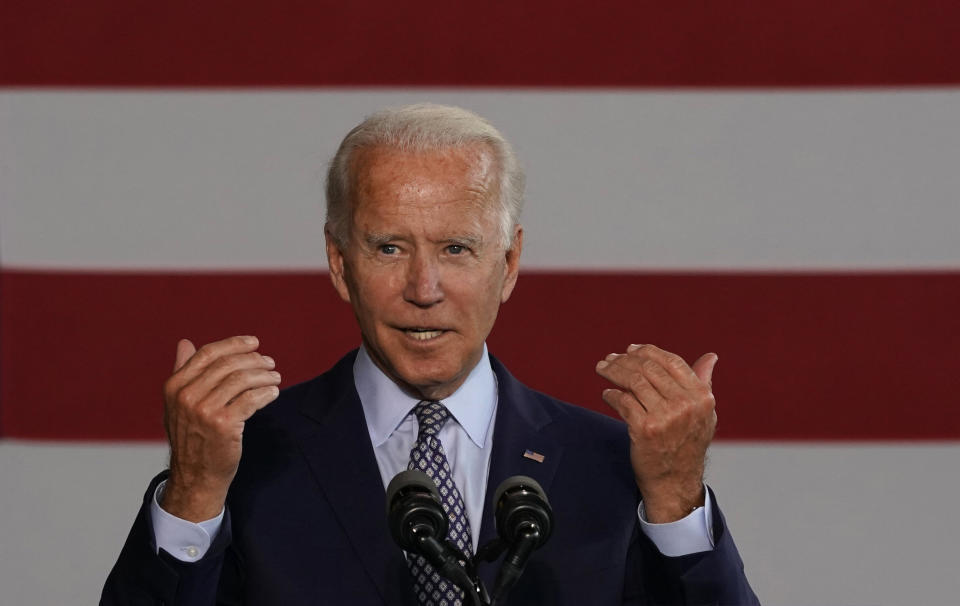
Unlike Sanders’ proposal, which called for the phaseout of nuclear plants, senior Biden campaign officials said the reactors deemed safe would be kept online along with hydropower stations held to the same standard. Biden also vowed to invest in researching new, smaller reactors as part of the proposal he campaigned on last year.
The new Biden plan calls for retrofitting 4 million commercial buildings and 2 million private homes with energy-saving upgrades over the next four years. The targets, the plan projected, would create at least 1 million jobs and put the United States on track to halve emissions from buildings ― currently the fourth-largest source of carbon dioxide pollution, with 12% of the country’s output ― by 2035. The changes would also spur construction of 1.5 million new homes and public housing units, the campaign said, and establish the standards to zero out all emissions from new housing by 2030.
Biden pledged to make large-scale investments in rail transport and replace all of the country’s 500,000 school buses with American-built electric alternatives by 2030. Likewise, he vowed to expand access to electric buses in all U.S. cities with 100,000 residents or more, buy roughly 3 million new electric vehicles for the federal government, and build a massive charging network across the country.
It’s difficult to pinpoint a precise number of jobs the proposal would create. But the campaign pegged the number in the millions, and said it would set rules that all federal contractors must pay a minimum wage of $15 per hour, provide paid leave and allow employees to form unions.

The plan also lays out targets and new federal offices aimed at reducing the ways in which pollution disproportionately sickens and kills racial minorities in the U.S. The campaign said 40% of the $2 trillion plan would go to so-called frontline communities, mostly Black, brown and poor neighborhoods where companies have historically sited heavily polluting plants to take advantage of the residents’ lack of political power to fight back. The proposal calls for new federal enforcement and monitoring in those communities, the establishment of an environmental and climate justice division at the Department of Justice and the creation of a Department of Health and Human Services office dedicated to health equity.
Those pitches in particular offer a harsh juxtaposition to the Trump administration, which this week plans to finalize changes to the National Environmental Policy Act that would limit communities’ input on new pipeline and highway projects. The country’s bedrock anti-pollution law has offered an effective bulwark against Trump’s push to expand fossil fuel infrastructure over the past few years.
The administration made axing climate regulations a cornerstone of its agenda from the moment Trump took office, and has directed millions in federal funding to debt-smothered oil and gas companies even as average Americans face a historic eviction crisis amid the pandemic-induced economic depression.
On the call Tuesday morning, the Biden campaign reiterated its pledge to ban new fracking on federal lands. It’s unclear whether a Biden presidency would restore or put new restrictions on federal support for existing drilling. Sanders, Sen. Elizabeth Warren (D-Mass.) and Washington Gov. Jay Inslee ― three primary opponents from whose highly praised climate plans the Biden campaign clearly borrowed ― all vowed to end the drilling process known as hydraulic fracturing. Top Democrats, however, have long feared that such a pledge would cede the gas-producing state of Pennsylvania to Trump, who won it in 2016.
“You can’t address the risks of climate change without America’s natural gas and oil industry,” Mike Sommers, the president of industry lobbyist the American Petroleum Institute, said in a statement. “This plan would require a massive amount of infrastructure buildout, a goal we all share. Unfortunately, it comes at a time when we’ve seen opposition to energy projects of all kinds with activist groups obstructing development every step of the way.”
The Republican Party’s rapid-response team accused Biden of embracing “radical Green New Deal polices” in a show that “he’s willing to sacrifice blue collar jobs to achieve the far left’s wish list.”
But that argument may be a difficult sell as the United States continues to suffer a worse coronavirus outbreak than almost any other rich country, in part because of the president’s plan to revive the economy hinged on reopening businesses rather than providing the kind of direct government support to maintain employment that counterparts in Europe and the United Kingdom offered.
Climate, moreover, is Trump’s weakest point. He spent years gutting regulations and public health safeguards while openly mocking scientists and promoting debunked theories about warming. Wildfires and hurricanes, meanwhile, took record tolls of Americans. His bungled response to Hurricane María’s devastating effect on Puerto Rico, the largest remaining U.S. colonial possession, is now widely seen as an omen for how his administration would handle the pandemic.
Americans overwhelmingly understand that climate change is a threat. Two-thirds of Americans said the federal government is doing too little to address the issue in a Pew Research Center poll released last month.
In a survey by the liberal think tank Data for Progress earlier this month, 56% of registered voters said they would be more likely to cast ballots for a president who pledges to achieve 100% clean energy by 2035 and create millions of jobs in the process. That included 76% of Democrats, 42% of Republicans and 42% of independents. The polling also showed that Biden’s proposals are popular in battleground states such as Florida, Michigan and Pennsylvania.
“This is the single most comprehensive and ambitious climate plan ever advanced by a major presidential nominee,” said Sam Ricketts, a former Inslee staffer and co-founder of the Democratic climate policy group Evergreen Action. “The next president must act with urgency to defeat the climate crisis and to rebuild our economy, and this plan lays out a path towards the climate mobilization that America needs to meet this moment.”
Related...
Joe Biden And Bernie Sanders Unveil Names For Joint Policy Task Forces
Bernie Sanders, Joe Biden Teams Come Up With Progressive Policy Recommendations
Joe Biden Credits Elizabeth Warren With Helping Craft His New Economic Plan
Also on HuffPost
Love HuffPost? Become a founding member of HuffPost Plus today.
バングラデシュ
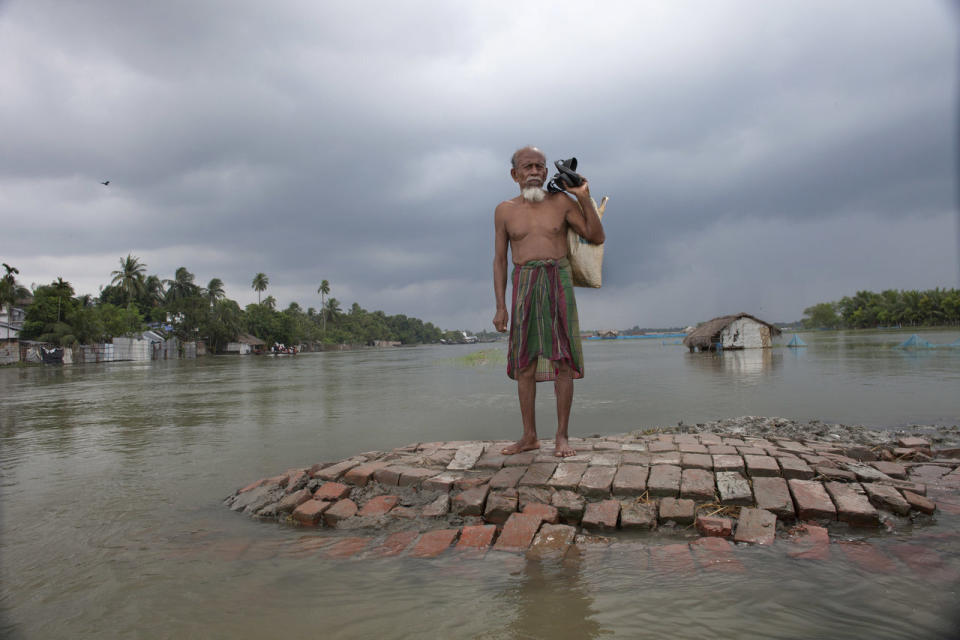
また、EUのグローバル気候変動同盟(GCCA)は「すでに沿岸部や乾燥・半乾燥地域では、洪水、熱帯低気圧、高潮、干ばつが頻発している」と報告している。
バングラデシュのシェイク・ハシナ首相は9月にハフポストUS版に寄稿し「バングラデシュは、気候変動の脅威に最もさらされている国です。気候変動と、気候変動が与えるその影響と闘うためには、明確なゴールが重要です」と述べている。また、2015年の降水量が例年より50%増え、農作物が深刻を受けたことに触れ「パリの気候変動会議では、測定可能で検証できる排出量削減目標を定めなければなりません」と強調した。
上の写真は2011年にバングラデシュ南西のサトキラ地区で起こった洪水の様子だ。男性がレスキューボートを待っている。
チャド
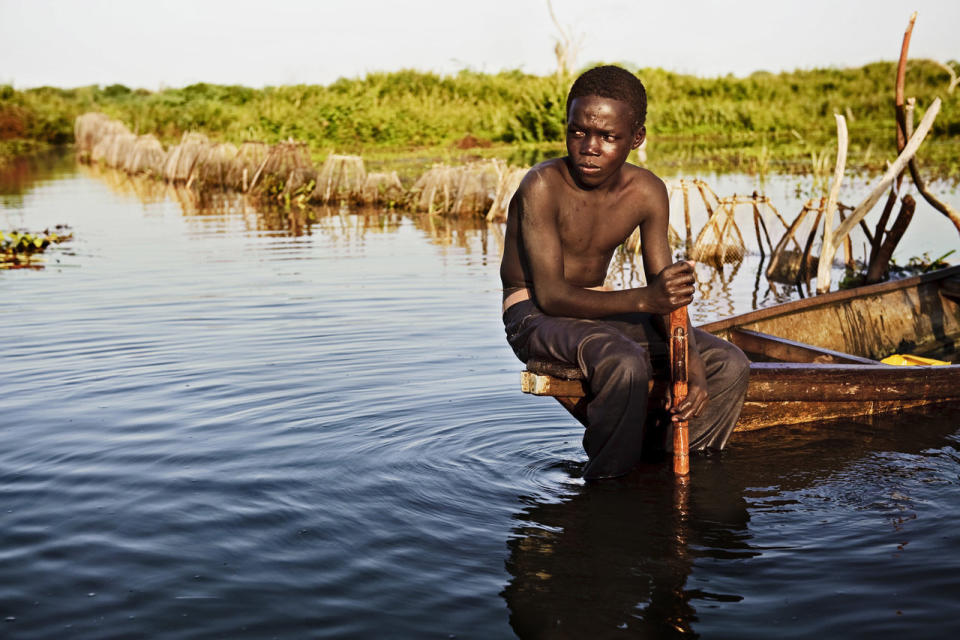
チャドはアフリカで最も貧しい国のひとつで、大規模な自然災害に対処するための十分な設備がない。GCCAの報告書は「自然災害によって深刻な干ばつや破壊的な洪水が増加する可能性があり、農業、畜産、漁業、健康や住宅へ大きな打撃を与えるだろう」と伝えている。
気候変動による被害が最も顕著なのはチャド湖だ。国連によれば、湖の大きさは1963年と比較して20分の1に縮んでいる。
上の写真は、かつては世界で最も大きな湖のひとつだったチャド湖だ。ニジェール、ナイジェリア、カメルーンといったチャド湖に面するその他の国々も、気候変動と湖の面積が縮んだことによる影響を受けている。
パリの気候変動サミットで、ナイジェリアのムハンマド・ブハリ大統領は「チャド湖に面している国々は、お互いが直面している課題についてさらに詳しく話し合い、この問題を一日も早く解決しなければなりません」と語った。
太平洋の島々

10万5000人が住み、33の島国からなるキリバスは平均標高が2mもない。Webマガジン「Slate」によれば、パリの気候変動会議でアノテ・トン大統領は「島に人が住めない状態になった時は島民を保護するとフィジーが申し出てくれている」と語っている。
上の写真は9月に撮影された。キリバスの村民ベイア・ティームは、以前は3~4年に一度起こっていた異常な高潮が今は3カ月おきに発生し、ほとんどの井戸が海の下に沈んでしまった、と話す。
キリバスに助けの手を差し伸べたフィジーも、自然災害に直面している。10月に行われた太平洋諸国の会議でラトゥ・イノケ・クンブアンボラ外相は、気候に影響を受けやすい腸チフスやデング熱、レプトスピラ症、下痢性疾患がフィジーで再び増えていると述べたとガーディアン紙が伝えている。
ニジェール
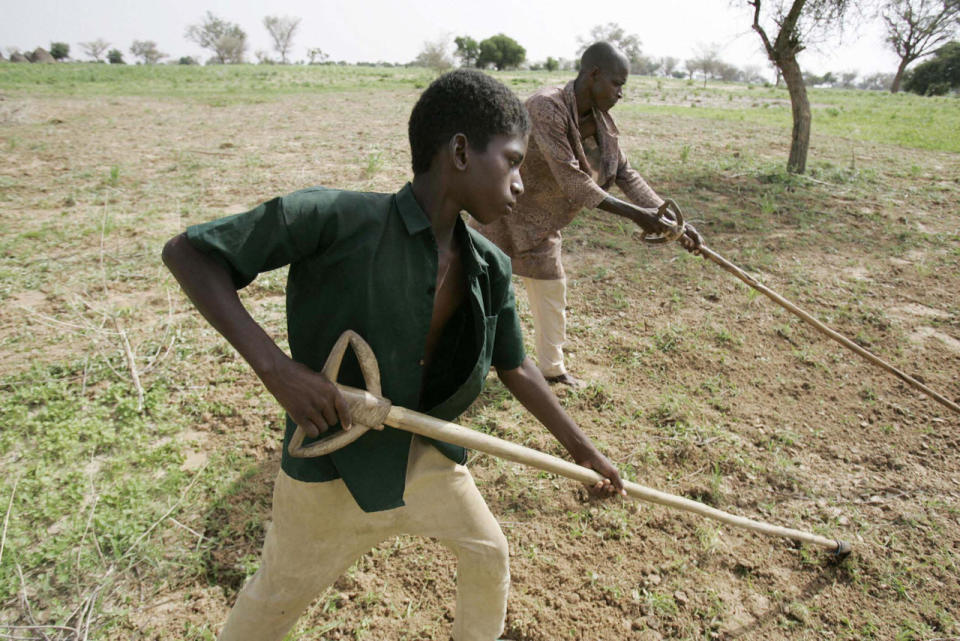
2013年には世界銀行のエコノミスト、エル・ハッジ・アダマ・トゥーレ氏が次のように述べている。「気候リスクにさらされ、さらに内陸国であるニジェールは、世界で最も温暖化の影響を受けやすい国のひとつです」「状況を複雑にしているのは、国内と地域それぞれで抱える過激派です。これらの要因が農業に影響を与えることで、食料や栄養の問題に発展します」
ニジェールは世界で最も出生率の高い国だ。女性1人あたりが産む子供は7.6人で、2031年までに人口が2倍に増加すると予想されている。気候変動で農業が打撃を受ければ、多くの国民が食料不足に苦しむ可能性がある。
上の写真は農作業をするニジェール人の少年と父親だ。2005年に撮影された。
ハイチ
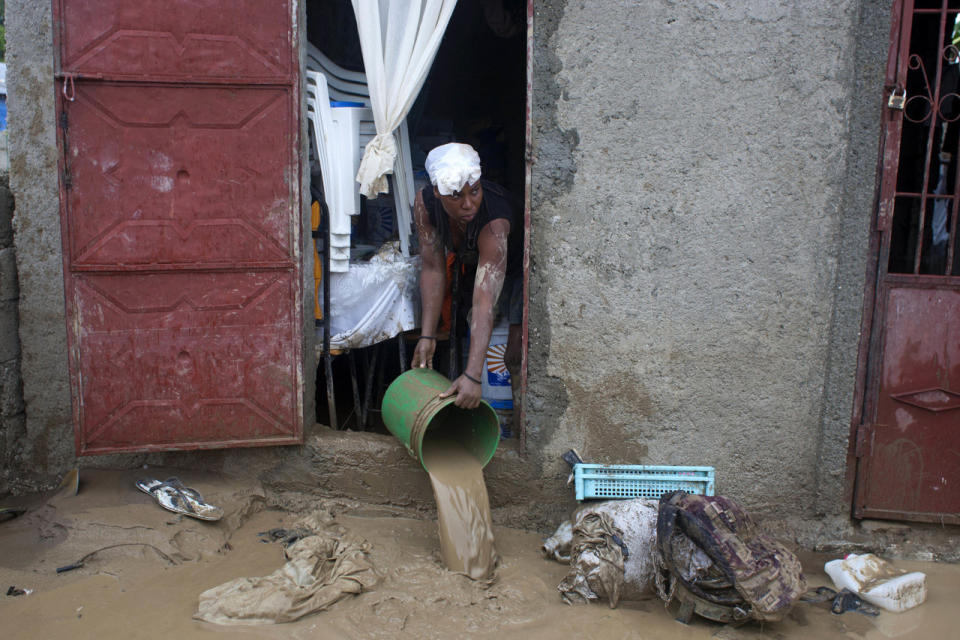
コンゴ民主共和国
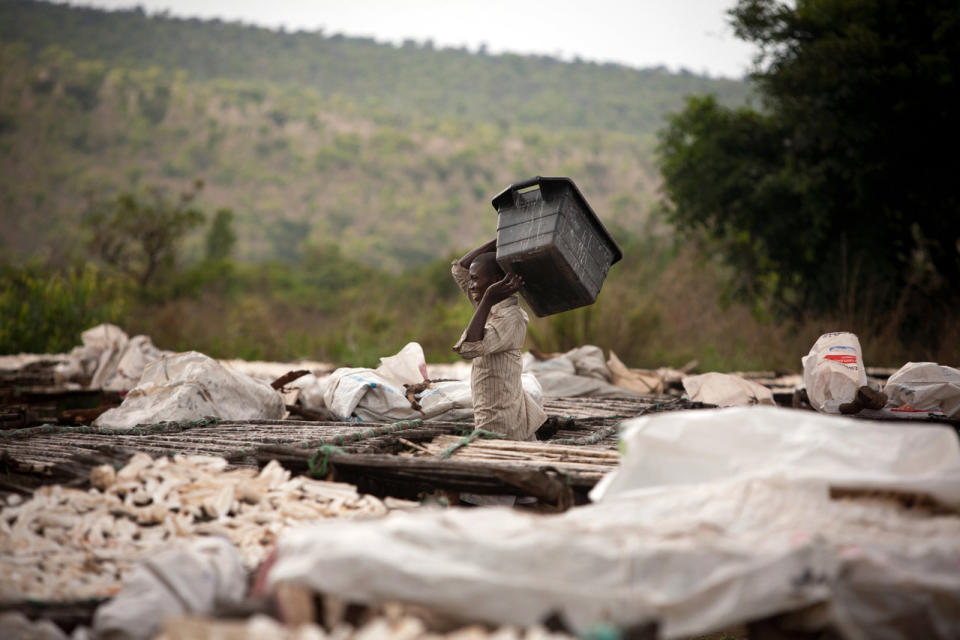
コンゴでは90%近くの人が農業で生計を立てているが、気候変動により中央部に位置するコンゴ盆地では豪雨、洪水、地すべり、土壌の浸食が発生し、農作物が大きな打撃を受ける可能性があるとBBCが伝えている。逆に南部のカタンガでは、2020年までに雨季が少なくとも2カ月短くなるだろうと予想されている。
また、温暖化によってマラリアや心臓血管病、水を介する感染症が増えるとも予測されている。
上の写真は、CO2を吸収するアカシアの木々の間でキャッサバを育てるコンゴ人男性。国連の地球温暖化防止条約で「CO2排出量の多い国」と登録されたことを受け、温暖化防止に取組んでいる。
アフガニスタン
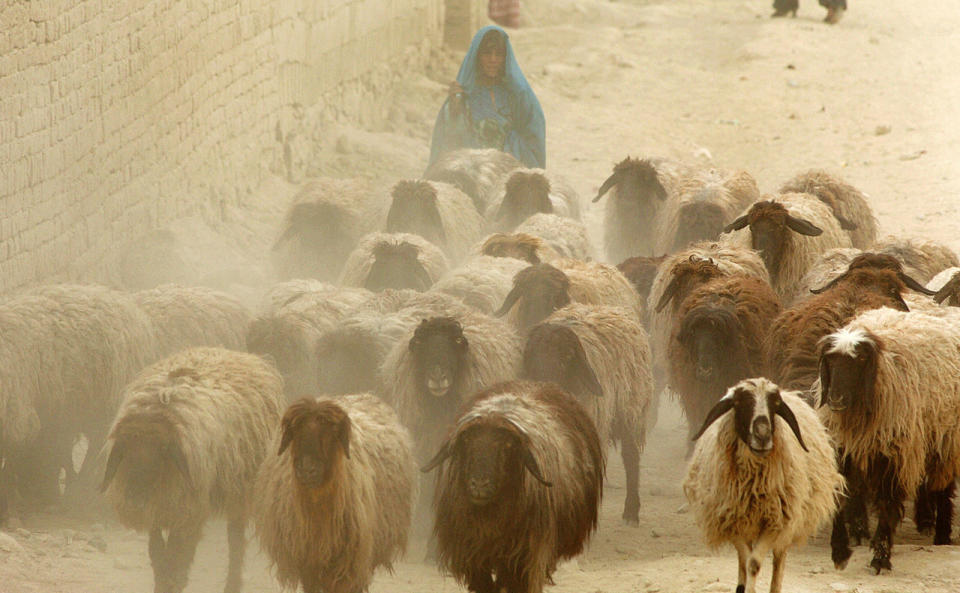
中央アフリカ共和国

森林の研究機関「国際林業研究センター」の科学者のデニス・ソンワ氏は「状況に適応する能力をつければ、国を発展させることができます。誰もが参加できるような仕組みを作ることによって、紛争を減らし国内の緊張を和らげるでしょう」と語った。
ソンワ氏によれば、中央アフリカ共和国では、いまだにかんがいシステムが整備されておらず、雨季に降る雨に頼る昔ながらの農法が使われている。
一方で、首都バンギでは何度も洪水が起き、年間平均700万ドルの損害が出ているとガーディアン紙は伝える。
上の写真は、アメリカ陸軍特殊部隊との会議が行われている建物を警備する中央アフリカ共和国軍の軍人だ。
ギニアビサウ
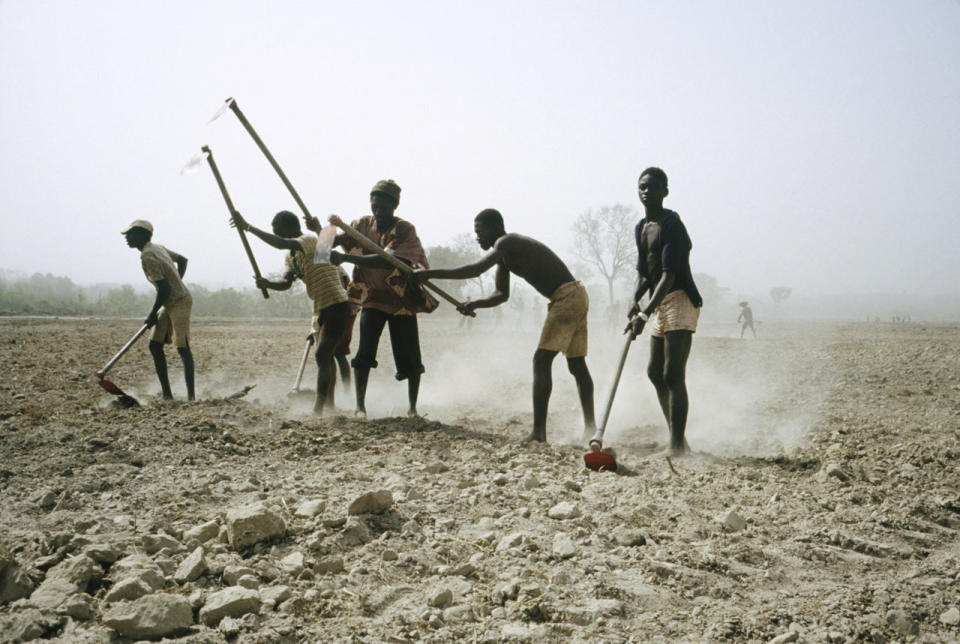
ギニアビサウもかんがいではなく、雨に頼って農業をしており、これがすでに問題となっている。
報告書には「気温の上昇にともない、あちこちで雨の降り方が不規則になっている。そして地表から蒸発する水蒸気の量が急激に増えたことで、農作物の生産が落ち、土壌が浸食されるようになった」と書かれている。
上の写真は、ギニアビサウの都市コントゥボエル近郊で水田を耕す農夫たちだ。
This article originally appeared on HuffPost and has been updated.

